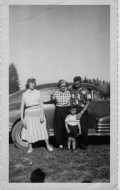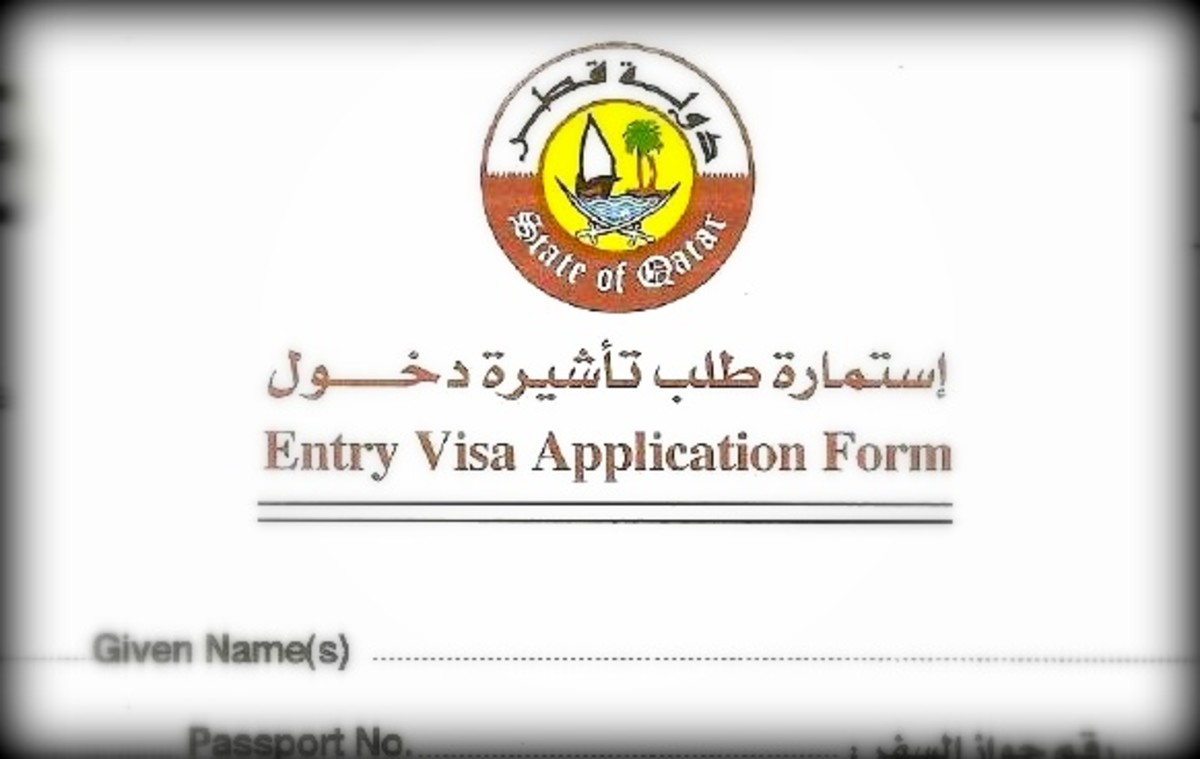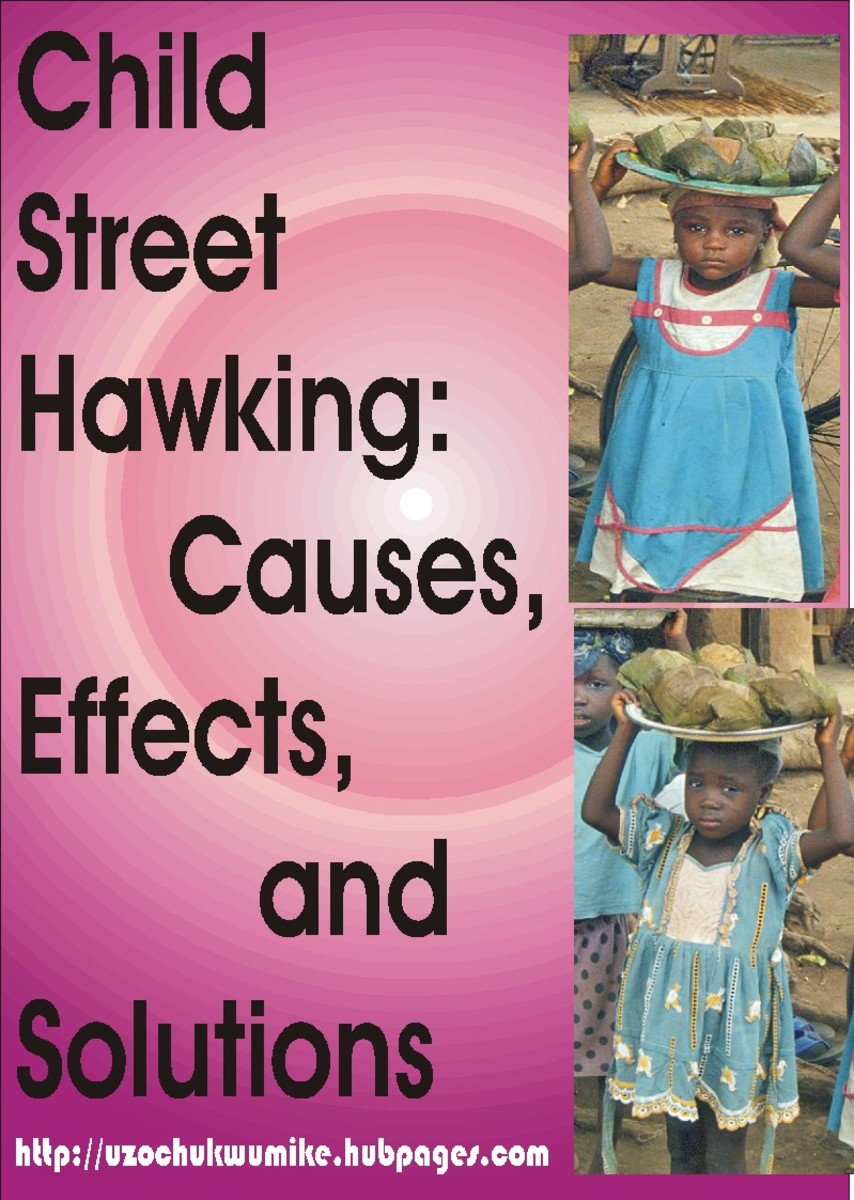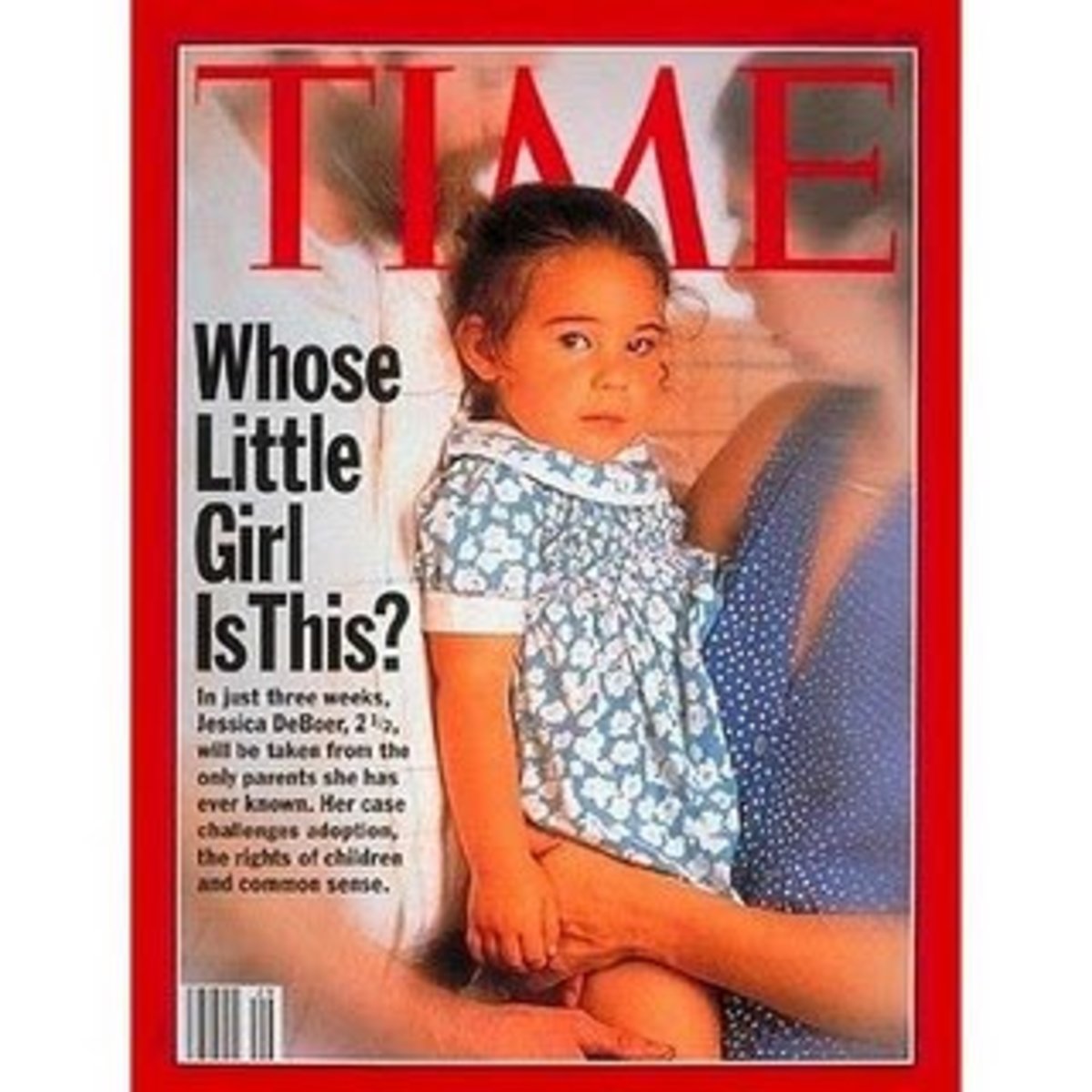International Adoption Laws

General Steps to Follow
Quite these several years ago our family embarked on a journey to adopt children from the South American country of Paraguay.
This article outlines the set of procedures and laws we had to follow to both satisfy the governments of the United States and, for this article, the country of Paraguay is used. Government laws change from time to time so it is advised that the following be used as a general guide only.
Since we completed our adoption of Sam and Maria, Paraguay has been closed for adoption to American citizens. The Government of Paraguay has informed the American Embassy in Asuncion that no new cases of international adoptions of Paraguayan orphans will occur until the Paraguayan government opens its Center for Adoptions. In 2013 the government of Russia has also enacted laws preventing US citizens from adopting Russian children - how long this situation lasts can be longer than most people expect.
An international child adopted by a US citizen must obtain an immigrant visa before he or she can enter the US as a lawful permanent resident. There are two distinct categories of immigrant visas available to children adopted by US citizens.
These two categories of laws are extremely important to be aware of when adopting a foreign born child. In more than one instance, Ilene and I were witness to prospective parents being shocked and heartbroken that their child’s status ran afoul of US law and instead of being able to bring the child home within months, they had to reside with the child in the foreign country for an extended period!
A Previously Adopted Child – section 101(b)(1)(E) of the US Immigration and Nationality Act defines an ‘adopted child’ as one who was adopted under the age of 16 and who has already resided with, and in the legal custody of the adoptive parent for at least two years. Parents who can demonstrate that their adopted child meets this requirement may file and I-130 petition with the US Bureau of Citizenship and Immigration Services in the Department of Homeland Security (BCIS) having jurisdiction over their place of residence. Upon approval of the I-130 petition, the parents may apply for an immigrant visa for the child at the US Embassy.
An Orphan – if an adopted child has not resided with the adoptive parent for two years (or if the child has not yet been adopted) the child must qualify under section 101(b)(1)(F) of the US Immigration and Nationality Act in order to apply for an immigrant visa. The main requirements of this section are as follows:
- The adoptive or prospective adoptive parent must be a US citizen;
- The child must be under the age of 16 at the time an I600 Petition is filed with the BCIS on his or her behalf;
- If the adoptive or prospective adoptive parent is married, his or her spouse must also be a party to the adoption;
- If the adoptive or prospective adoptive parent is single, he or she must be at least 25 years of age;
- The child must be an orphan, as defined by US regulations. Although the definition of an orphan found in many dictionaries is ‘A child whose parents are dead,’ US immigration law and regulations provide for a somewhat broader definition. Children who do not qualify under this definition, however, may not immigrate to the US as an orphan even if legally adopted by a US citizen.
This last bullet point is extremely important to consider and is the point some of the unfortunate parents were in violation of. When we adopted from Paraguay, under US law, the mother of the child could be known and offer the child for adoption. But the father’s whereabouts and condition must be unknown to the mother, the Paraguayan courts, or the US Embassy.
US Immigration Procedure for Orphans
The Petition
Adoptive and prospective adoptive parents must obtain approval of a Petition to Classify Orphan as an Immediate Relative (form I600) from the US Bureau of Citizenship and Immigration Services in the Department of Homeland Security (BCIS) before they can apply for an immigrant visa on behalf of an orphan. The adjudication of such petitions can be very time consuming, and parents are encouraged to begin the process well in advance. The I600 is the form used when the adoptive parents have identified a specific child and is necessary for the visa issuance at the US Embassy in the foreign country. The BCIS confirms all aspects of the I600 petition – including the suitability of the adoptive parents, compliance with any state pre-adoption requirements (if the child is to be adopted after entry into the US), and the qualifications of the child as an orphan within the meaning of section 101(b)(1)(F) of the Immigration and Nationality Act. When the petition has been approved, the BCIS notifies the US embassy or consulate that processed visas for residents of the child’s country. At the same time, the approved I600 petition and supporting documents are sent to the National Visa Center in New Hampshire, where the petition is assigned a computer tracking code and then mailed to the appropriate US consular office abroad.
A prospective adoptive parent may file Form I600A Applications for Advance Processing of Orphan Petition with the BCIS office having jurisdiction over their place of residence. This form allows the most time-consuming part of the process to be completed in advance, even before the parent has located a child to adopt. In addition, a parent who has an approved I600A may file in person at the US Embassy in the country of adoption. By completing the I600A ahead of time, only one parent is required to travel to internationally for the adoption completion.
The Orphan Investigation
One part of the process that BCIS cannot complete in advance is the ‘orphan investigation.’ This investigation is the most nerve wracking part of the adoption process for most adoptive parents. On both of our adoptions I can remember Ilene and I being on tenterhooks over the final investigative report. The Consular will pour over the adoption papers and testimony to determine if the child is actually an orphan and was really abandoned by the father. If this is found not to be the case, the adoption is in serious jeopardy, with heartbroken parents having to make a life decision concerning a little one they have bonded with and fallen in love with.
An orphan investigation form I604 Report on Overseas Orphan Investigation is required in all orphan adoption cases – even if an I600 has already been approved – and serves to verify that the child is an orphan as defined by US immigration law. A consular officer performs this investigation at the time of the child’s immigrant visa interview.
Most countries require that prior to any court action, a child placed for adoption be legally recognized as an orphan, or if a parent is living to be legally and irrevocably released for adoption. Most foreign countries also require the child to be fully adopted in the foreign court.
Some countries also accept the US home study at face value – but most, and this includes Paraguay, require a personal appearance by the adoptive parents before the foreign court. Some countries also require a period of residence within the country to facilitate the adoption fully. Others require follow up reports and/or a follow up interview by the adoption agency or the foreign country’s counsel after a period of time has elapsed in the US.
Affidavit of Support
As of February of 2001, Form I-864 (Affidavit of Support) is no longer required for immigrants considered an orphan (classification IR-3), provided the child will be admitted to the US while still under the age of majority, reside in the US, and be in the custody of the adoptive US citizen parent.
Visa
When the foreign adoption is completed, the adoptive parents can then apply for an immigrant visa (IR-3 for adoption abroad and an IR-4 for adoption within the US) at the US embassy or consular office abroad. In addition to the notification of approval of the I600 (600A) by BCIS in New Hampshire, further documentation must also be approved before visa issuance (the US State Department strongly advises that prospective parents contact the consular section conducting the visa interview prior to the actual scheduling of the interview. An important thing to remember is that a visa is not permission to enter the US – final authority rests with the BCIS at the port of entry.
The US Embassy will require a preliminary meeting in the foreign country to discuss any additional forms needed (doctor examination packet, International passport, photography, etc.). The Embassy also requires a visual inspection of the child. During the final visa interview, the counsel will review that all paperwork is correct before the visa is granted. An embassy approved doctor must conduct the medical examination and the sealed packet must be returned to the embassy (the US is concerned with certain serious contagious diseases or disabilities that may make the child ineligible for a visa). The child may still be eligible for the visa after treatment or a waiver by BCIS. Any parent concerned about the health of a child should have an examination completed by a private doctor of their choosing.
Visa Interview
The next step in the process is the visa interview with a US Embassy consular officer. Adopting parents will need to set up an interview as soon as all administrative tasks have been completed. These tasks include:
- notification by BCIS that the I600 or I600A have been approved
- the foreign government or courts have signed the final adoption decree
- the child’s birth certificate
- the child’s country of origin passport
- the completed, signed, and sealed medical examination report
- two passport quality photographs of the child
- the visa application
The consular will verify that all the paperwork is in order, verify that the child is an orphan under US law, and verify that the adopting parents have legal custody. The consular will also verify that the child’s medical condition does not bar them entry to the US and that all travel documentation is intact.
Orphan Definition
The consular must verify that the child in fact, is an orphan as defined by US law. The common definition of an orphan is a ‘child whose parents are dead’ and, if this is the case, a child will be automatically considered an orphan under US law. But the BCIS also defines a child as an orphan who has no parents due to several other circumstances.
Visa Rules
For children fully adopted overseas, an IR-3 visa is issued. Both parents must also have traveled to and seen the child. A child who has not been fully adopted overseas and/or has not seen both parents qualifies for an IR-4 visa, which requires finalizing the adoption in the US.
In some clear cut instances, the consular officer in the foreign country can approve an adoption – but this is rare.
BCIS reviews all documentation and either approves or disapproves the adoption. If BCIS disallows an adoption, the case can be appealed to the BCIS Associate Commissioner for Examinations. In rare and exceptional cases, a child can be deemed eligible for admission to the US under ‘humanitarian parole’ status.
Adoption Procedures in the Foreign Country
This section leans heavily on our personal experience in Paraguay and may differ for adoptive parents going to other points on the globe.
Step one is acceptance of the child by the adoptive parents. This is the point where you will receive a short biography and that wonderful little picture of someone who needs love and a home.
The prospective parents sign a power of attorney in order to give legal right for your attorney in (Paraguay) to work on your behalf without you having to be present in the country.
All legalized documents required by the country are translated and sent abroad. This includes copies of personal documents (marriage license, birth certificates, letter of recommendation), as well as the home study.
Step two involves the legalization of the documents in Paraguay. All documents are checked for missing stamps and for authenticity. Internal taxes are paid, and the documents are submitted to the Department of the Interior.
Step three involves your attorney who petitions the judge for an appointment and presents the case. The judge examines the documents and signs the First Providencia if all is in order. The District Attorney (Fiscal in Paraguay) records the case.
Step four involves a lot of document shuffling. Documents are sent to the Appeals Court for review. This process could take several weeks as they are not always in session and multiple judges need to approve the documents. All documents are then recorded by the court secretaries.
The documents are then sent back to the judge presiding over the case.
Step five starts the process of interviewing the biological mother. The attorney petitions the judge to assign a date for a court appearance by the biological mother, which can’t take place until all of the legalized documents for the case are received by the attorney.
The judge orders a psychological evaluation on the biological mother with the results being available in a few weeks.
At this time, the judge also assigns a social worker to visit the foster home and verify the child’s welfare.
The biological mother then appears before the judge to ratify her intention to adopt out her child. If the biological mother does not appear, the date is rescheduled up to two times. If the biological mother fails to appear, the adoption is published in the paper for three weeks to give her notice.
The judge then assigns a court date for the adoptive parents.
Step six is where things get really interesting for the adoptive parents – this is travel time for the first appearance before the judge. Both parents must travel to meet with the judge and receive guardianship of the child. This is the point where the adoptive parents are responsible for the total care of the child. This includes paying for child care and medical care if needed.
Step seven is a meeting with the consular at the US embassy to testify that you have seen and met with the child. This must be done on the first trip or both parents will be required to travel again on the second trip.
Step eight, the parents take their Paraguayan psychological tests – as noted previously, this involves a lot of questions, rudimentary Rohrshack tests, and a favorite color test (don’t pick black!).
Step nine is the wait for the finalization of the case. This is the point where both parents return home or elect to stay and wait (as we did with Sam) or one leaves and one stays with the child. The wait time is not the same with each case and could take from a few weeks to a few months!
Step ten has the documents being sent to the Appeals Court to verify that all are in order and complete.
Step eleven is where the documents are returned to the judge for preparation and signing of the final decree (Sentencia Final). A new birth certificate is issued. A public translator duly registered and legalized by the Supreme Court then translates all documents into English.
Step twelve has one or both parents returning to Paraguay to complete the process.
Step thirteen requires the issuance of a Paraguay passport from the police department for the child. Parents have to take the child to a photo studio for passport photos.
Step fourteen has the adoptive parents taking the child to the US embassy to request a visa interview and to receive the sealed package to bring to the approved Embassy doctor. The US counsel will schedule a follow up appointment for two days hence.
Step fifteen, the parents make an appointment to bring the child to the Embassy approved doctor for a general physical, blood, and stool samples, and testing for communicable diseases. When the results are available (usually the next day), the parents bring the sealed report back to the US embassy.
The last step, which is the visa interview, has the counsel entering the information from the final decree on the application form for the child’s US visa. The visa will be issued 48 hours later giving the counsel ample time to review all documents.
Time to travel home!
It seems so easy and straightforward when you read the process step by step. Under normal circumstances, and with a little luck, it will all play out as outlined above, which was our experience with our first adoption. Under abnormal circumstances or with difficulty verifying paperwork with an uncooperative judge, these steps will be drawn out or repeatable. But keep in mind that all the folks we knew in Paraguay, with all different situations, all came back to the US with their child.
I have recently published a biographical novel on my families' adoption experience in South America.








